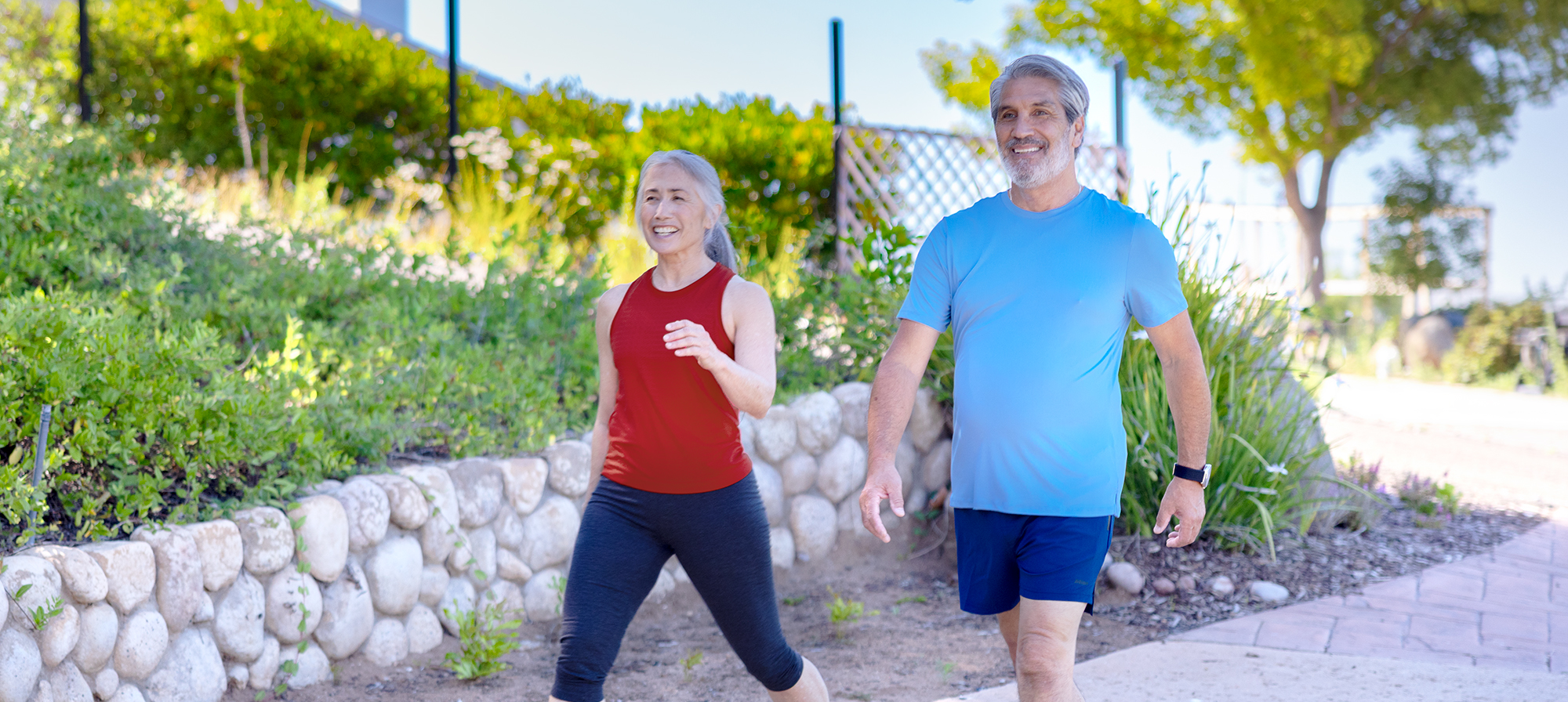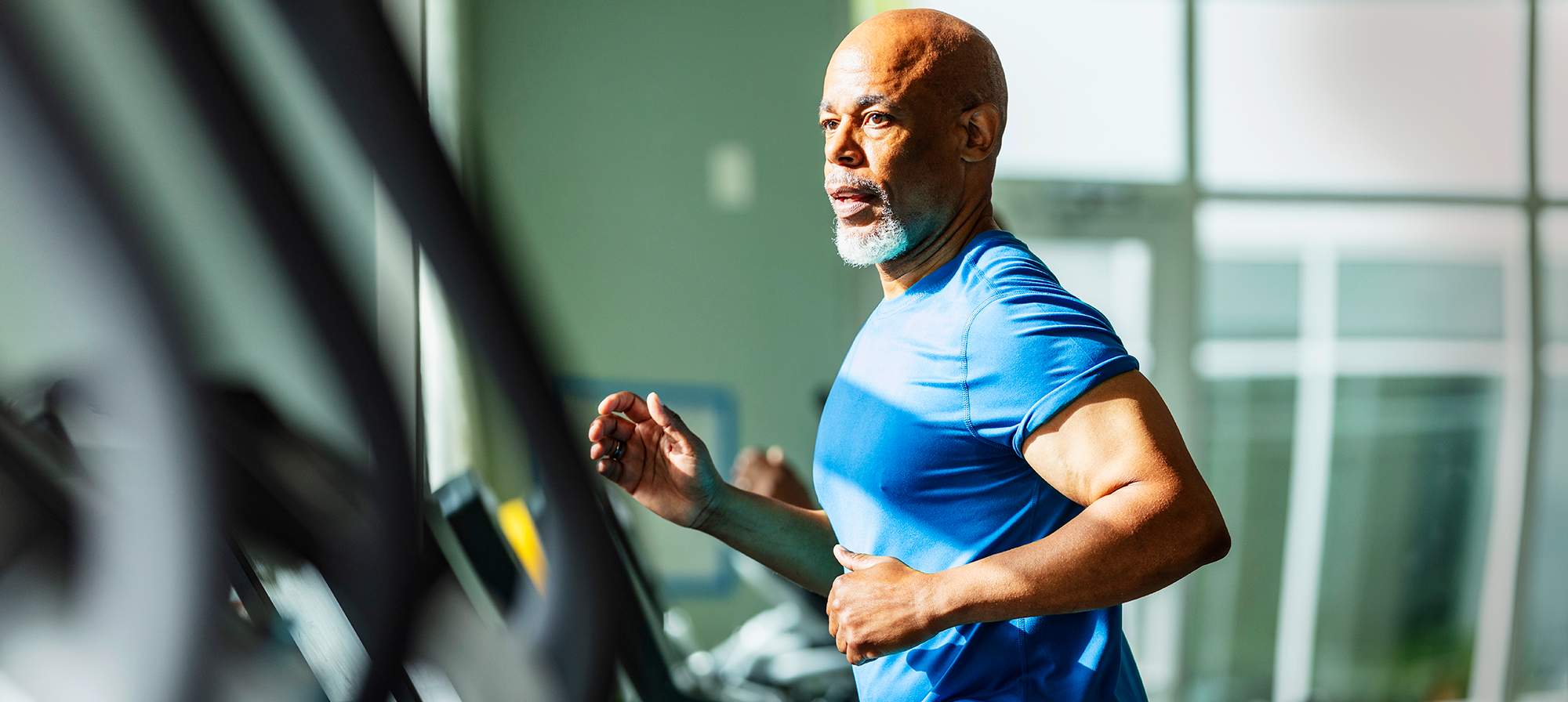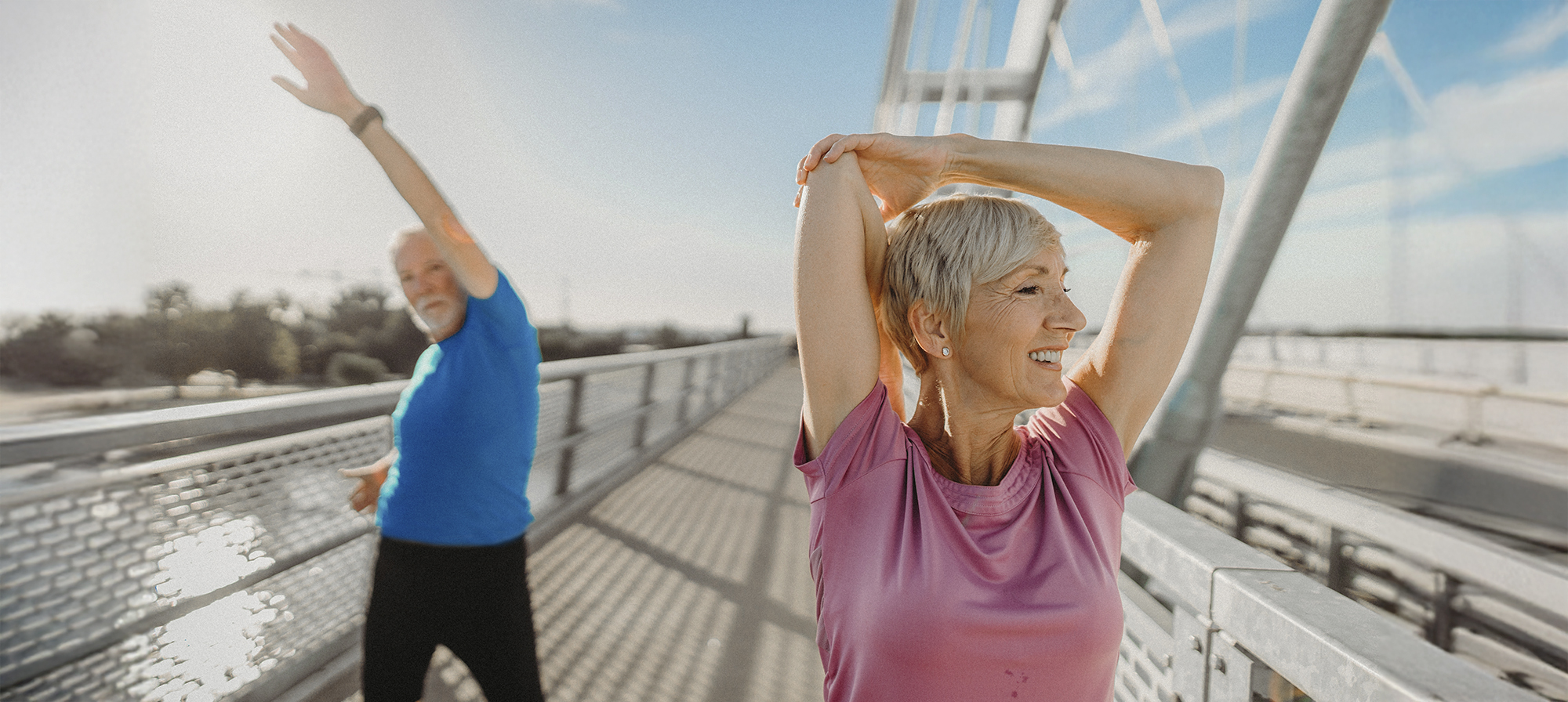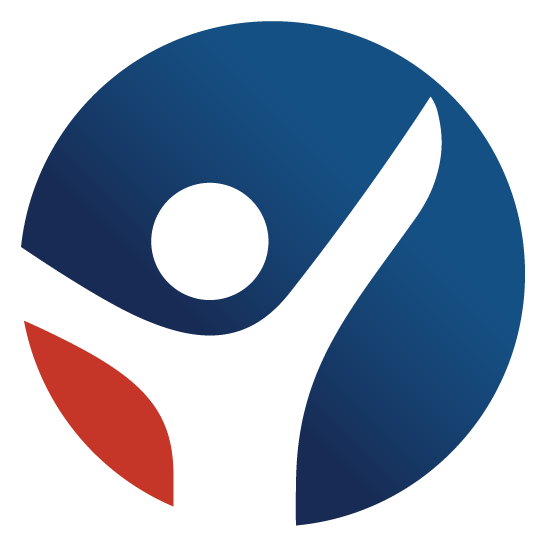Do you feel ready to move from a walk to a run? Read on to learn how this transition can help you reach your new health and fitness goals.
Runners are everywhere. You’ve likely passed by a running club in the early hours of the day. Or maybe you’ve supported a friend or family member who is training for a marathon or 5K. Running never goes out of style—it's a timeless activity that keeps people moving all year long.
While running may be a proven approach to staying fit, it takes work. Running involves endurance, motivation, and discipline. These require time and training to build. Plus, running can be tough on your body. So, how can you set yourself up to become a better runner? If you’re looking to move from walking to running, slow running or jogging might be the answer.
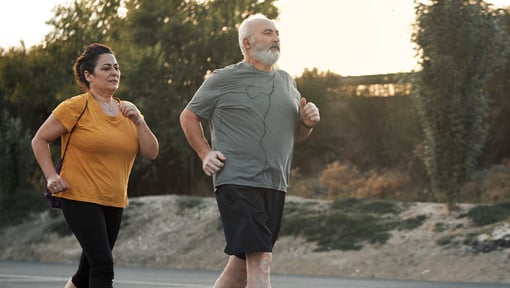
How does slow running/jogging work?
Slow running, or low-intensity running, is jogging, where you can easily carry on a conversation. By transitioning from a walk to slow running, you can help boost your stamina, make your body use oxygen more efficiently, and build stronger muscles to support your fitness goals.
During your walk, pick up your pace a bit so you are doing a trot or jog for a short period of time. Try following the 80/20 rule at first, with 80 percent of your distance being a brisk walk, while the remaining 20 percent should be at a faster and more focused pace of a slow run or jog.
Regarding heart rate zones , most of your walk should have you in zone 2. This is around 60 to 70 percent of your max heart rate. You can keep this in mind if you wear a heart rate monitor and track your heart rate when you exercise.
The other 20 percent will be a higher intensity—about 70 to 85 percent of your max heart rate. As this becomes easier, you can move to 70/30, 60/40, 50/50, and so on, until your entire distance is jogging. Over time, you can follow the same plan, but start with 80 percent as a jog or slow run and 20 percent at the faster pace. Then increase to a speedier pace over time.
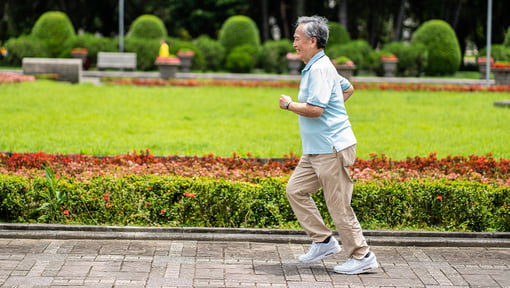 How your body adapts and improves
How your body adapts and improves
Picking up your walking pace to a slow run can help improve your stamina and resistance to fatigue. This happens because your body adapts by making changes at a cellular level. Mitochondria—your cells' energy producers—become more efficient and start to multiply. This helps your body better process energy from oxygen and food to power your runs.
As you run, your body also grows new, tiny blood vessels called capillaries. These deliver oxygen-rich blood directly to your muscles. With more capillaries, your muscles get a better supply of oxygen. This means you can run longer distances before feeling fatigued.
By running slowly, you’re training your body to run with less effort.
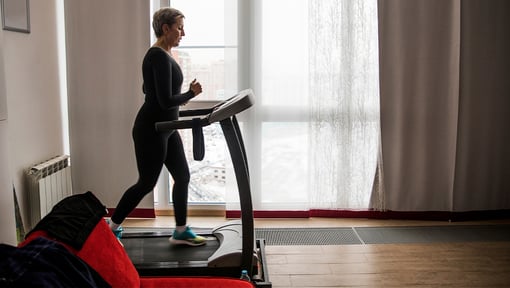
The benefits of transitioning to slow running/jogging
Slow running or jogging can be a great option for anyone. This is true whether you’re picking up running later in life or training to increase your pace and improve your stamina. Slow running can:
- Allow your body to adapt to the stress of running. And it’s easier to sustain than moderate- or high-intensity exercise. You’ll be more likely to stay consistent and, in turn, see long-term benefits.
- Boost heart health. Research shows that just 5 to 10 minutes of slow running each day can reduce your risk of heart disease and improve longevity. This means you don’t need to sprint or run fast to see health benefits—slow and steady jogging can still make a big impact.
- Help build endurance. Slow running strengthens your muscles, heart, and lungs over time.
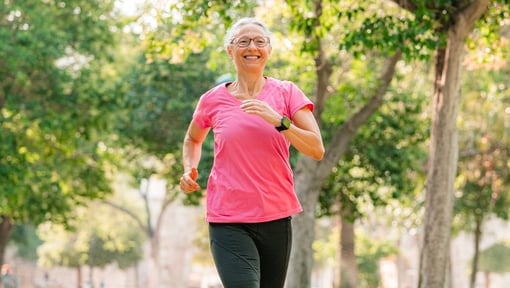
Tips to consider
You can add slow running into your routine and reap its benefits by following a few key tips.
1. Choose the right running shoe.
Before you start slow running, you’ll want to make sure you have a good running shoe. Look for shoes that offer comfort and a good fit. You can even visit a specialty shoe store to get help with a fitting. If you have foot issues, like pain, be sure to talk with your doctor, a podiatrist, or a physical therapist.
2. Start with a proper warmup.
Be sure to start your slow run with a warmup. This helps prep your body for the run and lowers the risk of injury. You should warm up first by walking briskly for 5 to 10 minutes.
The cooldown should look the same. You can add stretching exercises, too.
3. Add progression to your slow runs. You can increase the duration gradually.
Don't rush into lengthy runs right away. Start with shorter runs and, over time, increase the time of your runs as your stamina improves. This will help your body adapt and prevent injury.
4. Set some intentions for yourself before your slow run.
Think about your goal. Do you want to run for 30 minutes? Do you want to log one mile or 5 miles? It might help to focus on achieving a specific time. That way, you won’t try to speed up your pace to get more miles into your run.
5. Talk with your doctor.
Jogging and running may not be for everyone. For instance, if you have arthritis in your hips or knees, you may want to talk with your doctor first to be sure this activity is safe for you.
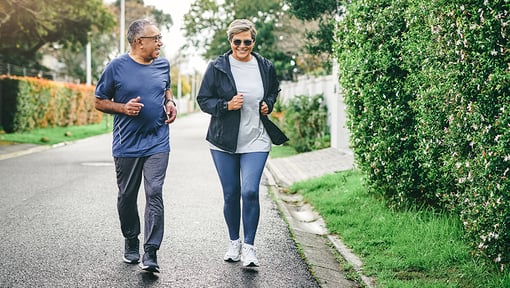
Final thoughts
Slow running or jogging isn’t just a stepping stone—it’s a smart and lasting strategy for becoming a stronger, faster runner. Whether you're easing into a new fitness routine or refining your training approach, it offers a way to build endurance, protect your body, and stay consistent over time. By embracing a slower pace, you’re not falling behind—you’re laying the groundwork for long-term progress. So lace up, take it slow, and trust that every step forward is helping you go the distance.
Not a Silver&Fit® member? Learn more about everything the program has to offer, including more helpful healthy living tips like this, here on our website.
This information is not intended to take the place of regular medical care or advice. Please check with your doctor before using this information or beginning any self-care program. Images used for this article do not depict any members of the Silver&Fit program.
References
American Heart Association. (2024, August 12). Target heart rates chart. https://www.heart.org/en/healthy-living/fitness/fitness-basics/target-heart-rates
Brock, S. (2024, July 2). Recommended exercises for adults 50+. Stanford Lifestyle Medicine. https://longevity.stanford.edu/lifestyle/2024/07/02/recommended-exercises-for-adults-50/
Bryant, C. X. (2021, January 04). The evolution of fitness trends. American Council on Exercise. https://www.acefitness.org/about-ace/our-efforts/blog/7765/the-evolution-of-fitness-trends/
Cleveland Clinic. (n.d.). Aerobic exercise. https://my.clevelandclinic.org/health/articles/7050-aerobic-exercise
Cleveland Clinic. (2020, July 7). How to become a faster runner. https://health.clevelandclinic.org/how-to-become-a-faster-runner
Cleveland Clinic. (2024, May 2). What is slow running and does it work? https://health.clevelandclinic.org/slow-running
Dalleck, L. (2012, February). From ancient Greece to Zumba: 50 events, people and trends that have shaped the history of fitness (Part 2). American Council on Exercise. https://www.acefitness.org/certifiednewsarticle/2224/from-ancient-greece-to-zumba-50-events-people-and-trends-that-have-shaped-the-history-of-fitness-part-2/
Harvard Health Publishing. (2014, July 30). Running for health: Even a little bit is good, but a little more is probably better. https://www.health.harvard.edu/blog/running-health-even-little-bit-good-little-probably-better-201407307310
Hebshi, S. (2016, July 15). Boost your endurance with low-intensity workouts. American Council on Exercise. https://www.acefitness.org/resources/pros/expert-articles/6016/boost-your-endurance-with-low-intensity-workouts/
Mayo Clinic. (n.d.). Aerobic exercise: How to warm up and cool down. https://www.mayoclinic.org/healthy-lifestyle/fitness/in-depth/exercise/art-20045517
Schnohr, P., O'Keefe, J. H., Marott, J. L., Lange, P., & Jensen, G. B. (2015). Dose of jogging and long-term mortality: the Copenhagen City Heart Study. Journal of the American College of Cardiology, 65(5), 411–419. https://doi.org/10.1016/j.jacc.2014.11.023
Texas Tech University Health Sciences Center. (n.d.). Kenneth H. Cooper Institute. https://www.ttuhsc.edu/centers-institutes/kenneth-h-cooper-institute-.aspx
Tse, A. C. Y., Wong, T. W. L., & Lee, P. H. (2015). Effect of low-intensity exercise on physical and cognitive health in older adults: A systematic review. Sports Medicine - Open, 1(1), 37. https://doi.org/10.1186/s40798-015-0034-8
This article was written by Stephanie Ruiz, edited by Kimberley Reynolds, and clinically reviewed by Jaynie Bjornaraa, PhD, MPH, PT, LAT, ATC, CSCS, CSPS, on August 12, 2025.
